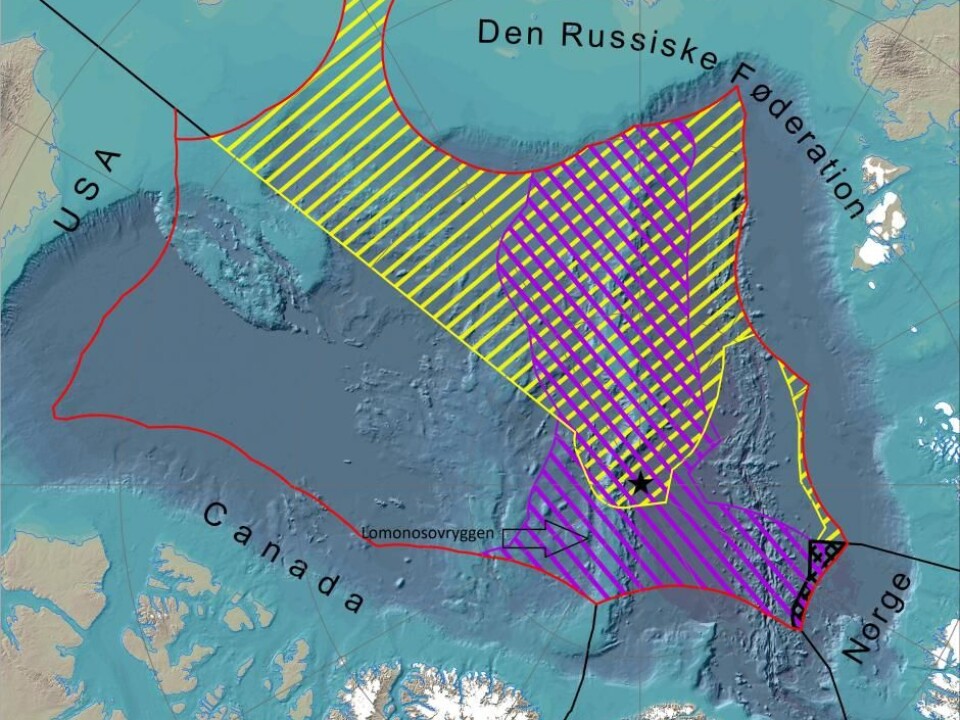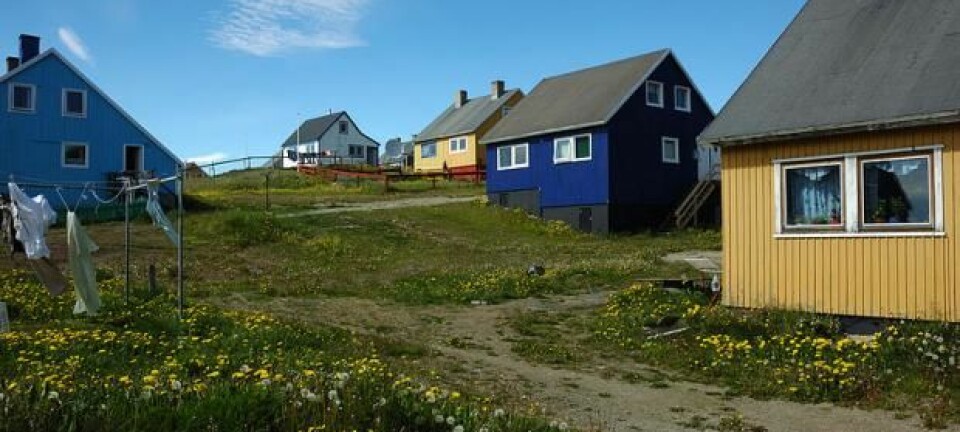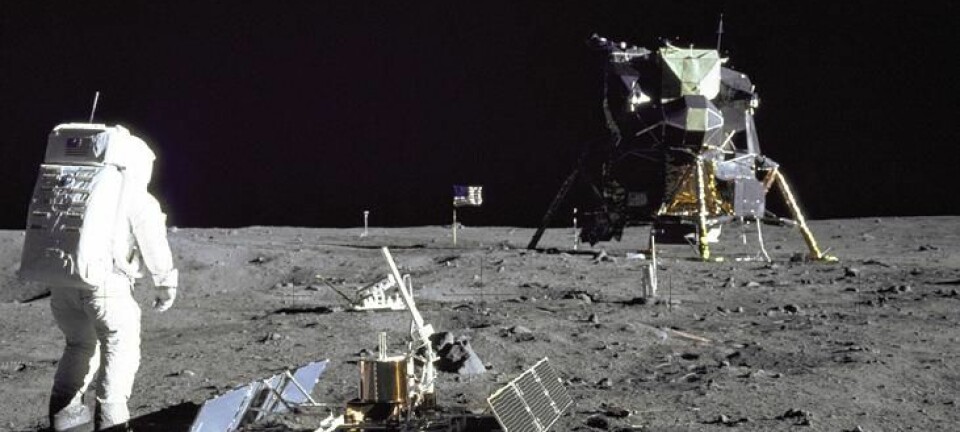
Claim to the Arctic rests on a shelf
Rocks from the Arctic seabed support the Kingdom of Denmark's claim to area north of Greenland.
A brown stone sits on a bookshelf in Copenhagen. This rather unremarkable and dusty piece of rock does not immediately stand out as an object that would spark political interest.
But this stone has a role to play in the Kingdom of Denmark’s extended continental shelf submission covering an area of 895,000 square kilometres in the Arctic Ocean north of Greenland.
“A central part of our argument for the area being part of the Kingdom of Denmark continental shelf is that the area is geologically a part of Greenland. The stone is an important piece of evidence,” says geologist Christian Knudsen, a senior scientist at the Geological Survey of Denmark and Greenland (GEUS).
He is lead author on a new study, in which the stone takes centre stage as support for the Kingdom of Denmark’s extended continental shelf claim.
Collected from the deep ocean

The stone was dredged from the seabed, more than three kilometres beneath the ocean surface. It comes from the slopes of the Lomonosov Ridge—a large underwater ridge that crosses the Polar Ocean from northern Greenland to Russia.
The Lomonosov Ridge runs through the centre of a large ocean area, in which Denmark has claimed the right to exploit resources at the seabed.
Russia also has a claim to the ridge, and Canada is expected to make their own claim in the coming years. So geological studies near the North Pole have big geopolitical implications.
“Interestingly, this fight at the North Pole is not fought by soldiers with swords or other weapons. It’s scientists like us who supply the supporting evidence for the Kingdom of Denmark’s claim,” says Knudsen.
Insight into the evidence
The stone has long since earned its military stripes. In 2014, the Kingdom of Denmark made its submission in the area north of Greenland to the Commission on the Limits of the Continental Shelf (CLCS) under the United Nations.
The new study makes part of this evidence public.
“It’s the first time that the public can get an insight into how we argue that the Lomonosov Ridge has a continental origin,” says Knudsen, and adds “We can see that the rocks were formed by two continents colliding.”
Whether or not the Lomonosov Ridge has continental origins might sound like an issue that is only of interest to geologists. But the answer has implications for whether the ridge is geologically connected to Greenland, and therefore whether the Kingdom of Denmark has the stronger claim.
“In this regard it was important that we show that the Lomonosov Ridge is continental and not oceanic rock,” says Knudsen.
According to Knudsen, the brownish rock resting on the bookshelf is an important piece of evidence, being the first rock that we know of to represent the mountains at the bottom of the ice-cold, deep Arctic Ocean.
The Sherlock Holmes of geology
In the analysis of the stone the scientists first had to prove that the it originated from the Lomonosov ridge.
That means they had to rule out the possibility that the stone had not been dropped into the area from above by melting icebergs—so-called “drop stones.” Icebergs are known to carry stones from land and drop them at sea, as the ice melts. Fortunately, the rocks forming the Lomonosov Ridge were covered by a 15 centimetre thick Iron-Manganese oxide crust that formed over the last eight million years.
“We used Beryllium isotopes to find the age of this crust, which proves that the rock was been in place long before ice ages could have carried it there. It it’s like detective work, and we have a Sherlock Holmes-like approach, using a range of methods and evidence to calculate back in time and build up a picture of what happened at the ridge,” says Knudsen.
Minerals reveal the stones’ age
In the new study, the scientists also analysed the mineral content of the stone. Their arrangement indicates the pressure and temperature that the rock was exposed too, suggesting that it was formed under the mountain folding processes that created the Lomonosov Ridge, says Knudsen.
“Based on analysis of the content of Argon isotopes in the minerals we know were formed during the mountain building episode, we could date this event to have occurred 470 million years ago,” says Knudsen.
Other scientists say this age needs to be confirmed using other methods and more samples, but the results clearly show, that the Lomonosov ridge has continental origin. Many other studies have reached the same conclusion, says geologist Thorsten Nagel
“But the results establish very clearly, more so than before, that the Lomonosov Ridge is continental with a long tectonic history,” says Nagel, an associate professor in the Department of Geoscience at Aarhus University, Denmark. He was not involved in the new study.
“All of the samples are clearly continental and much older than the oceanic basin that formed on either side of the Lomonosov Ridge,” he says.
Continental shelf limits
But establishing the ridge’s continental origins is not enough to guarantee the Kingdom of Denmark’s rights to exploit resources in the region. It also has to be establish that the ridge is both morphologically and geologically connected the North Greenland landmass. To demonstrate this, scientists have mapped the area with sonar and sound waves.
Russia has included parts of the Lomonosov Ridge in their revised submission to the CLCS and Canada is expected to do so as well.
When the CLCS has finalised their recommendation on the individual submissions there might be overlapping claims. This has to be resolved by the involved coastal states before a final delimitation of the extended continental shelf around the Lomonosov Ridge can take place, which could take some time yet.
----------------------
Read more in the Danish version on Videnskab.dk
Translated by: Catherine Jex
Scientific links
- 'Samples from the Lomonosov Ridge place new constraints on the geological evolution of the Arctic Ocean', 2017, Geological Society Publications, DOI: https://doi.org/10.1144/SP460.17
- 'Bedrock cores from 89° North: Implications for the geologic framework and Neogene paleoceanography of Lomonosov Ridge and a tie to the Barents shelf', 2001, Geological Society of America










